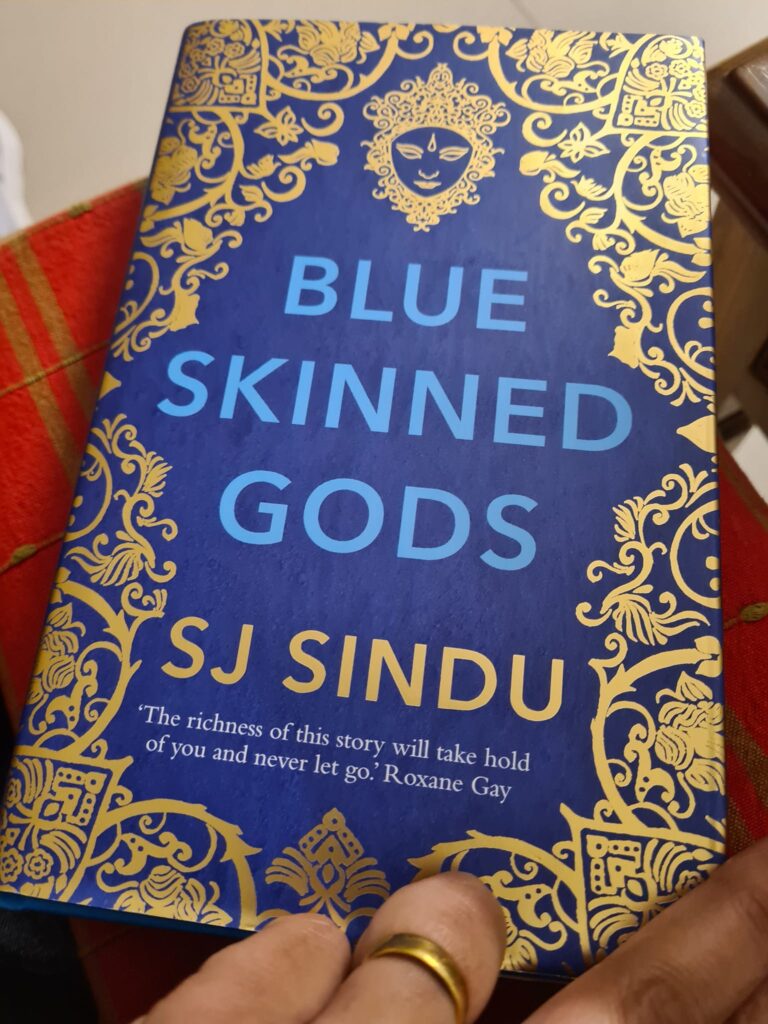( My review of Zia Haider Rahman’s debut novel, In the Light of What we Know, has been published in the Hindu Literary Review on 6 July 2014. Here is the url: http://www.thehindu.com/books/literary-review/two-worlds-apart/article6180418.ece . I am also c&p the text below.)
 Before 9/11, I was invisible, unsexed. How is it that after 9/11 suddenly I was noticed – not just noticed, but attractive, given the second look, sized up, even winked at? Was that the incidental effect of no longer being of a piece with the background of being noticed, or was it sicker than that? Was this person among us no longer the meek Indian, the meek Pakistani, the sepoy, but fully man? Before 9/11, I was hidden behind the wall of colonial guilt after having been emasculated by a history of subjugation. ( p.20)
Before 9/11, I was invisible, unsexed. How is it that after 9/11 suddenly I was noticed – not just noticed, but attractive, given the second look, sized up, even winked at? Was that the incidental effect of no longer being of a piece with the background of being noticed, or was it sicker than that? Was this person among us no longer the meek Indian, the meek Pakistani, the sepoy, but fully man? Before 9/11, I was hidden behind the wall of colonial guilt after having been emasculated by a history of subjugation. ( p.20)
Many people do know quite a lot about Bangladesh. They happen to be living in the region. I don’t think Indians and Pakistanis are quite ignorant about Bangladesh as the people you have in mind, and they make up a fifth of the world.
What about writing for a Western audience? I asked.
Bridging two cultures?
Why not?
…
How well will a book about modern India sell to a Western audience, a non-fiction book about this shocking economic trend-bucking phenomenon, if it were written by an Indian?
…
You could write against that, with one foot in the East and the other in the West. ( p. 320-1)
In the Light of What We Know is about two male friends, an unnamed narrator and Zafar, who first met as students at Oxford. Zafar is of Bangladeshi origin and his family is not very well off; unlike the narrator is from an affluent Pakistani family whose parents are academics, equally comfortable with the intelligentsia, politicians and high Society of New York as they are in Cambridge. The two friends after graduation went on to become bankers, soon to go their separate ways and lose touch with each other. The book consists of a long, meandering conversation with the men exchanging notes about their past, their careers, their families and their experiences since they last met in New York, when they were colleagues with bright futures at a financial firm. This meeting takes place in London, September 2008. There are moments when the narrator supplements the information with extensive notes he has read in Zafar’s diaries. At times it seems to meander into digressions (also lengthy epigraphs and extensive footnotes) that are packed with discussions revolving around cartography and the quality of translations (“Both of them face the same problem, namely, that they cannot capture everything exactly and they have to give up some things in order to convey anything at all.”); about war, atrocities committed during conflicts, experiences of an insider ( irregular) dealings in trading derivatives with the bankers who were the brains of these operations becoming collateral damage, discussions about philosophers such as Erich Fromm the Jewish German American philosopher, Western Classical music, science and mathematics such as Gödel’s Incompleteness Theorem, a theorem of mathematical logic about the impossibility of proving certain truths.
There is a story, albeit a thin one. It is about the relationship between two friends, a Pakistani and a Bangladeshi, two nationalities, belonging to two different parts of society yet it is a sense of belonging to the Indian subcontinent that keeps them together. Otherwise they have very little in common. Urdu, spoken in Pakistan and by Zafar’s parents, is not the narrator’s “mother tongue” so they resort to using English. These young men are representative of their generation—a South Asian professional of the diaspora—a close attachment and understanding of their own history, but acquire the sophistication required to move with grace in different societies. Along the way these young men become intellectual jukeboxes with sufficient bytes of information and cultural titbits to be accepted in various pockets of the world. It is like being a participant of a cultural tsunami. They encounter people of other nationalities who are like them too—Arab Muslims, Wahabi, Sunni, Israeli and Russian, Pakistani Christians, Arab Christians, Palestinian Christians, Coptic Christians, Englishmen who were in the Burma War—who in all likelihood have an equally complicated mixed bag of religious, cultural and nationalistic considerations to think about.
Read In the Light of What We Know as a middle class reader of twenty-first century experimental literature. Have no expectations of it being a novel of the classical form—a structured, chronologically told, multi-layered story. It is not. It is probably a biography, but even the narrator is not quite sure what to term it—“current enterprise” or “present undertaking”. The Internet is creating a new kind of fiction where sections of a novel that would work very well as an independent digital long read are being embedded in the architecture of the printed story. Zia Haider Rahman’s first fiction is a sound example of South Asian literature becoming a global novel, not necessarily an immigrant novel. It is at the cusp of the Anglophone novel infused with the confidence and characteristic of South Asian literary fiction. It is unapologetic about its style and is best read like a stream of consciousness set in an absurd drama. The novel could have been reduced by at least 100 pages without any harm done, yet it is a forceful debut—definitely one of the new and promising writers of 2014.
6 July 2014
Zia Haider Rahman In the Light of What We Know Picador India, New Delhi, 2014. Hb. Pp. 560 Rs. 599



